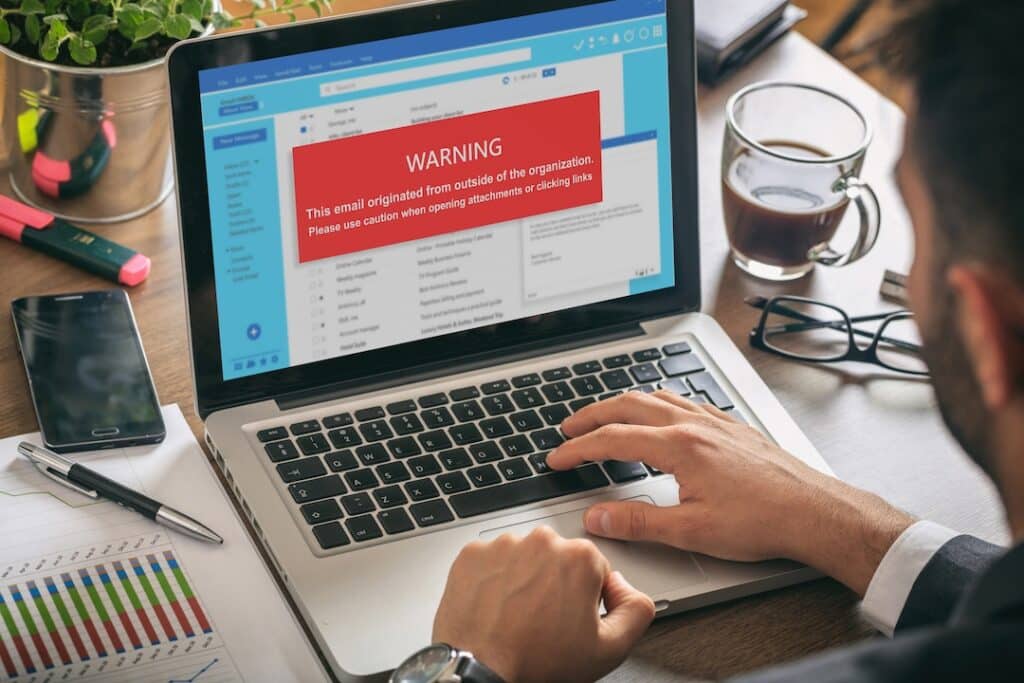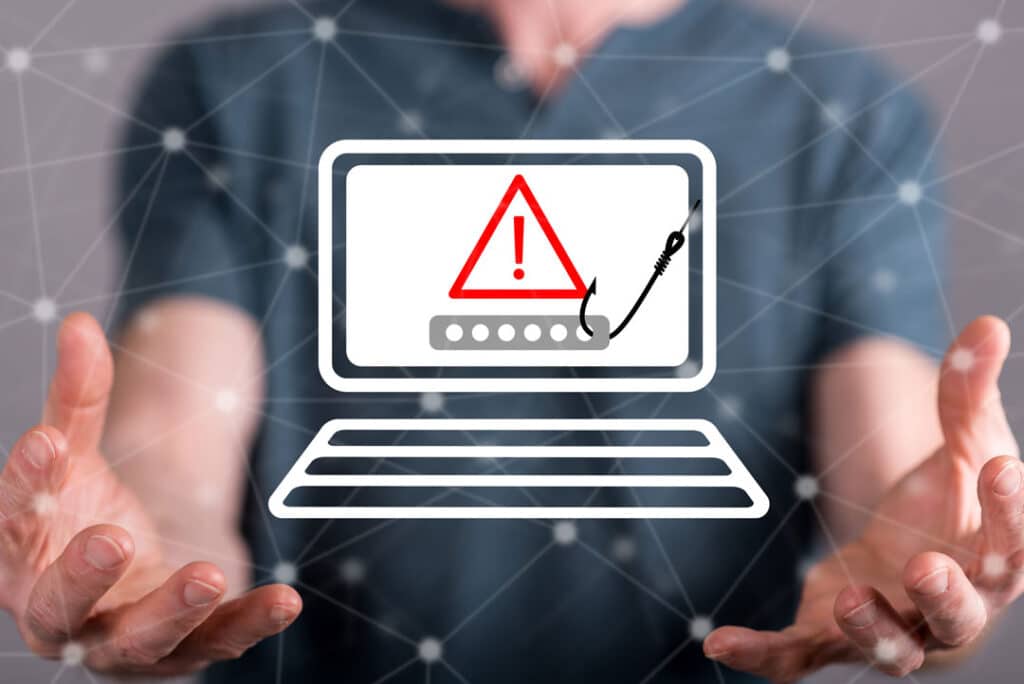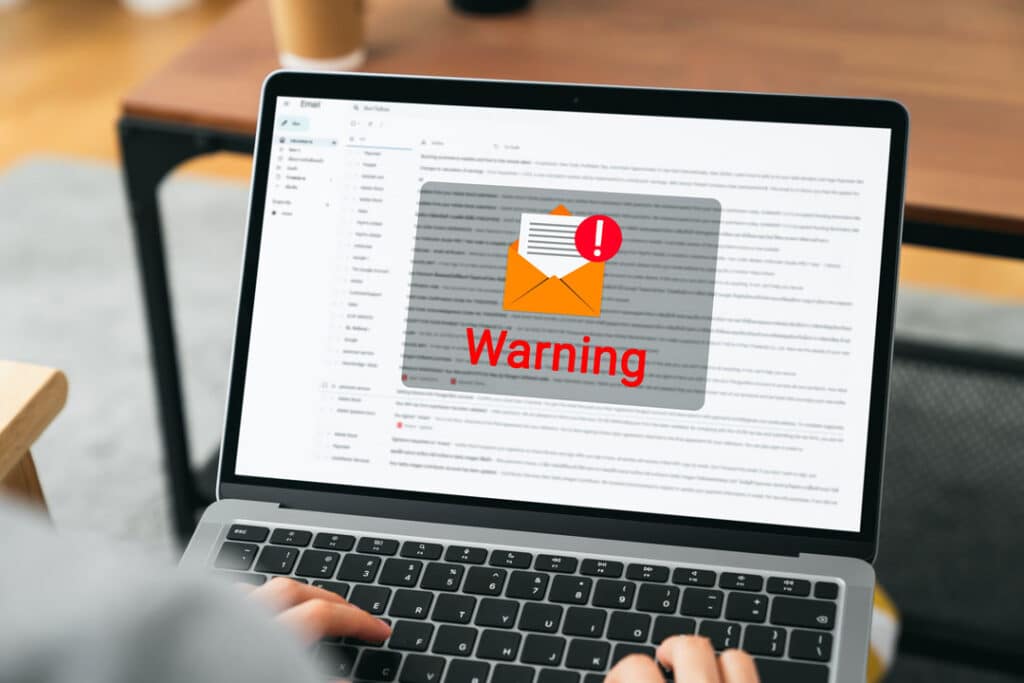Phishing attacks continue to be one of the biggest cybersecurity threats for businesses and individuals alike. These deceptive scams aim to trick users into revealing sensitive information such as login credentials, financial details, or personal data. But how can you recognize a phishing attempt before falling victim? One of the most common indicators of a phishing attack is suspicious or unexpected emails, often designed to appear as if they come from a trusted source.
What Is the Common Indicator of a Phishing Attempt?
1. Urgent or Threatening Language
Phishing emails often create a sense of urgency to pressure recipients into acting quickly. Messages may claim that your account has been compromised, your payment has failed, or legal action will be taken if you don’t respond immediately. Don’t fall for these scams. One of the best things you can do is to close the email and contact the organization it is claiming to be. This way you can confirm things are in order, it is also a great time to make them aware of the phishing scam as it may effect other customers or clients of theirs.
2. Unexpected Email Requests
If you receive an email from your bank, IT department, or a well-known company asking for personal information, be cautious. Legitimate organizations will never ask for sensitive data via email. Anytime you get a request for something that isn’t already public information there is no harm in closing the email and calling the party you think contacted you to confirm what they are looking for. Having proper DKIM and DMARC can help reduce these spoofing attempts.
3. Suspicious Links and Attachments
Phishing emails frequently contain malicious links or attachments. Always hover over links before clicking to check if the URL matches the legitimate website. When you hover over the email on a desktop or laptop computer it should show you the URL you are about to click on in the lower left hand corner. If an email includes an attachment from an unknown or unexpected sender, don’t open it! Attachments can house malware that also affect your phone, so never open attachments if you are not 100% sure who it came from.
4. Generic Greetings and Poor Grammar
Emails that start with “Dear Customer” instead of your name, contain spelling errors, or use awkward phrasing may indicate a phishing attempt. Most legitimate companies use professional language and address you by name. If you come across a generically worded email you can copy and paste it into Google to see if others have received similar emails. As always, protect yourself with up to date Anti-Virus software and even if it is on Google, be careful of the articles you click on.
5. Spoofed Email Addresses
Phishers often create fake email addresses that look similar to legitimate ones. Check for slight misspellings or extra characters in the sender’s address. For example, support@paypa1.com instead of support@paypal.com. This is a quick and easy way to spot phishing emails. Also check if the Reply-To email is the same as the one that sent you the original inquiry. Often times if a company hasn’t taken proper precautions phishers can send mail as them, but when you click to reply it is going to a gmail or some other generic un-branded email address. Also, a common phishing tactic is to change their name to the name of the email address they are trying to pretend to be, but if you were to look at the actual email that was sent it is a generic Yahoo or something else.
6. Mismatched URLs
If a link claims to take you to a trusted website, but the actual URL doesn’t match, it’s a red flag. Always verify links before clicking, and if in doubt, go directly to the official website by typing the address in your browser. Make a practice of when you get an email from your bank or any other financial institutions to open a new tab in your browser and login into your account by going directly to their website. Often times, scammers will go to great lengths to replicate whole websites to make you think you are logging into your bank but really it is a fake website just trying to get your login information.
Learn more about Common Types of Phishing Emails from this article.
How to Protect Yourself from Phishing Attacks
- Enable Multi-Factor Authentication (MFA): This adds an extra layer of security even if your credentials are compromised.
- Verify Requests: Contact the sender directly using official contact details before responding.
- Keep Software Updated: Ensure your operating system, browser, and security software are all up to date.
- Educate Employees: Conduct regular cybersecurity training to recognize phishing attempts. We offer Phishing Prevention Training Services for this very reason to our clients.
- Use Email Security Filters: Enable spam filters to block phishing emails before they reach your inbox.
Final Thoughts
Now that you know more about what is a common indicator of a phishing attempt, you are more prepared to protect yourself. Phishing attacks are becoming more sophisticated, but recognizing the warning signs can help prevent you from becoming a victim. Suspicious emails with urgent demands, unknown links, or spoofed addresses are strong indicators of a phishing attempt. By staying vigilant and implementing cybersecurity best practices, you can protect yourself and your organization from these malicious threats.
Need help securing your business against cyber threats? Contact Aegis IT today for expert cybersecurity solutions.
Need help securing your business against cyber threats? Contact Us Today for expert cybersecurity solutions.
Phone: 423-343-5160
Email: Support@ThinkAegis.com
Facebook | LinkedIn







